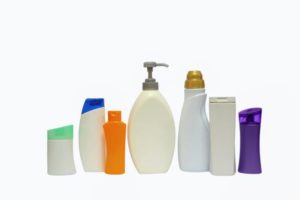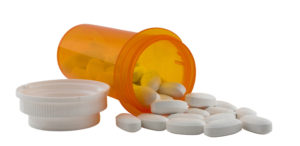 Chemicals known as "forever chemicals" or PFAS have been in the news a lot recently. This is because PFAS (per- and polyfluoroalkyl substances) are in so many products that we all use, yet research is showing more and more health harms from them. Including to pregnant women and developing babies.
Chemicals known as "forever chemicals" or PFAS have been in the news a lot recently. This is because PFAS (per- and polyfluoroalkyl substances) are in so many products that we all use, yet research is showing more and more health harms from them. Including to pregnant women and developing babies.
A recent study found that pregnant women who ate more ultra-processed or fast foods had higher levels of a type of forever chemicals (PFAS) called phthalates in their bodies. The food wrappers and packaging of ultra-processed and fast food, and even the gloves worn by food handlers, are a source of the harmful chemicals.
The chemicals migrate from the packaging or wrapping into the food, which is then ingested by the person. They then get into the pregnant woman's bloodstream, and eventually the placenta and fetus. They are endocrine (hormone) disruptors. Studies find that pregnant women with higher levels of phthalates have an increased risk of preterm birth, babies with low birth weight, and other problems (e.g., autism spectrum disorder).
The researchers found that diets high in vegetables, fruits, yogurt, fish, and nuts during pregnancy were associated with lower phthalate levels (measured in the urine of the pregnant women). Ultra-processed foods were between 9.8 to 59.% of the pregnant women's diets, with the average being 38.6%.
 Unfortunately, unprocessed and minimally processed foods are more expensive than ultra-processed foods. So it wasn't surprising that socioeconomic levels (including income levels) made a difference - the lower the household income, the greater the average ultra-processed food intake.
Unfortunately, unprocessed and minimally processed foods are more expensive than ultra-processed foods. So it wasn't surprising that socioeconomic levels (including income levels) made a difference - the lower the household income, the greater the average ultra-processed food intake.
Bottom line: Try to eat less fast food and pre-made packaged food. Read labels and avoid foods with ingredients that are not found normally in a home kitchen, but are chemicals (e.g., soy lecithin, carrageenan, high-fructose corn syrup, colors). We can't totally avoid all PFAS, but we can lower our exposure to them.
From Medical Xpress: Study: Pregnant women should avoid ultraprocessed, fast foods
If you're pregnant, you may want to think twice before making a hamburger run or reaching for a prepackaged pastry, according to research published last month in the journal Environmental International. ...continue reading "Pregnant Women Ingest Forever Chemicals In Ultra-Processed and Fast Foods"

 For years there has been much concern over chemicals that act as endocrine disruptors (hormone disruptors) in the personal products that we use on a daily basis. One big concern is whether these chemicals, such as parabens and phthalates, are causing breast cancer (as well as other harmful health effects). Because whatever you use on your skin, will get into you.
For years there has been much concern over chemicals that act as endocrine disruptors (hormone disruptors) in the personal products that we use on a daily basis. One big concern is whether these chemicals, such as parabens and phthalates, are causing breast cancer (as well as other harmful health effects). Because whatever you use on your skin, will get into you. There is a growing concern about what everyday exposures to phthalates in consumer products is doing to our health. For example, they're in plastic toys, plastic food containers, personal care products, and vinyl floors. The biggest concern is what these chemicals are doing to the most vulnerable among us - developing babies during pregnancy (gestational exposure), and children (childhood exposure).
There is a growing concern about what everyday exposures to phthalates in consumer products is doing to our health. For example, they're in plastic toys, plastic food containers, personal care products, and vinyl floors. The biggest concern is what these chemicals are doing to the most vulnerable among us - developing babies during pregnancy (gestational exposure), and children (childhood exposure). Many people don't realize that the plastic toys our children play with may contain harmful chemicals. Children get exposed to these chemicals by touching the toy (absorption through the skin), or ingesting chemicals (e.g. when a baby mouths the toy, or child ingests dust from the toy), but also from breathing in chemicals leaching out of all the plastic toys in the room into the air. This has been known a long time, yet here we are...
Many people don't realize that the plastic toys our children play with may contain harmful chemicals. Children get exposed to these chemicals by touching the toy (absorption through the skin), or ingesting chemicals (e.g. when a baby mouths the toy, or child ingests dust from the toy), but also from breathing in chemicals leaching out of all the plastic toys in the room into the air. This has been known a long time, yet here we are... This is rarely mentioned, but there is research showing that commonly used chemicals that we are exposed to, such as bisphenols (BPA, BPS), phthalates, persistent organic pollutants (e.g.flame retardants, nonstick cookware), heavy metals (e.g. lead), and some pesticides (e.g.chlorpyrifos, glyphosate), all have an impact on the gut microbiome in animals and humans.
This is rarely mentioned, but there is research showing that commonly used chemicals that we are exposed to, such as bisphenols (BPA, BPS), phthalates, persistent organic pollutants (e.g.flame retardants, nonstick cookware), heavy metals (e.g. lead), and some pesticides (e.g.chlorpyrifos, glyphosate), all have an impact on the gut microbiome in animals and humans. Many of us have concerns over the fact that people are constantly exposed to endocrine disruptors (chemicals that disrupt hormonal systems) in many common household and personal products. Even the vinyl flooring found in many homes contains phthalates, which are endocrine disrupting chemicals.
Many of us have concerns over the fact that people are constantly exposed to endocrine disruptors (chemicals that disrupt hormonal systems) in many common household and personal products. Even the vinyl flooring found in many homes contains phthalates, which are endocrine disrupting chemicals.